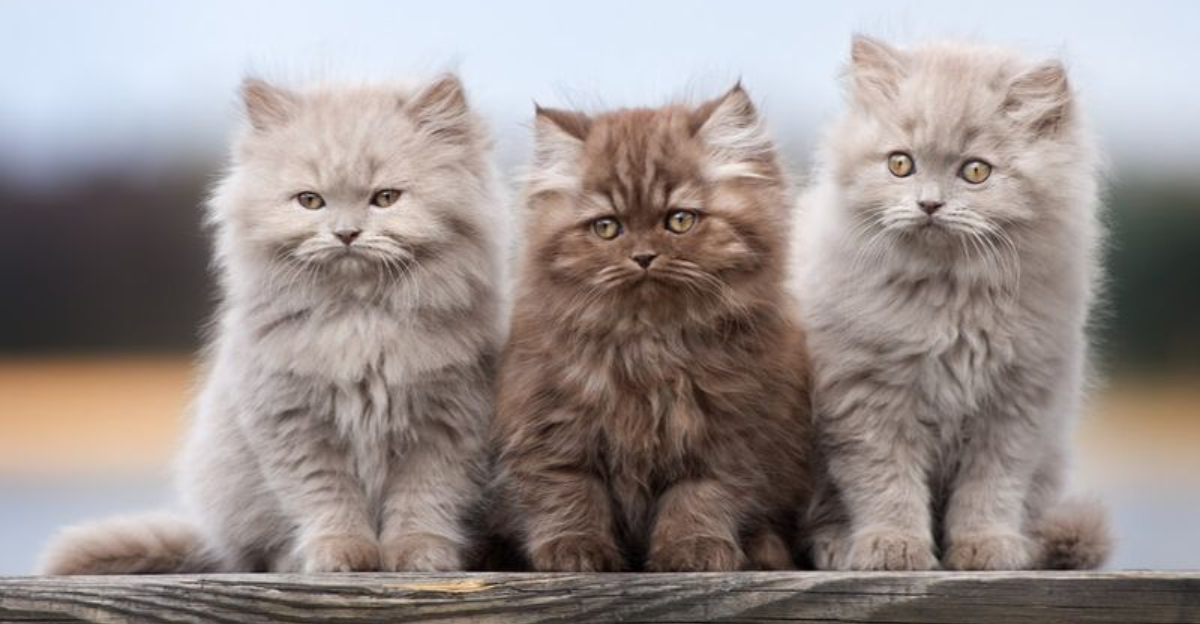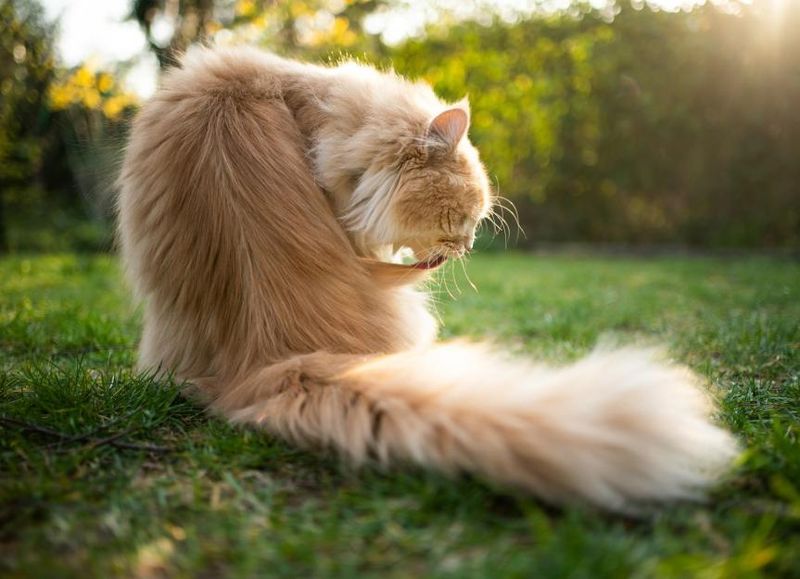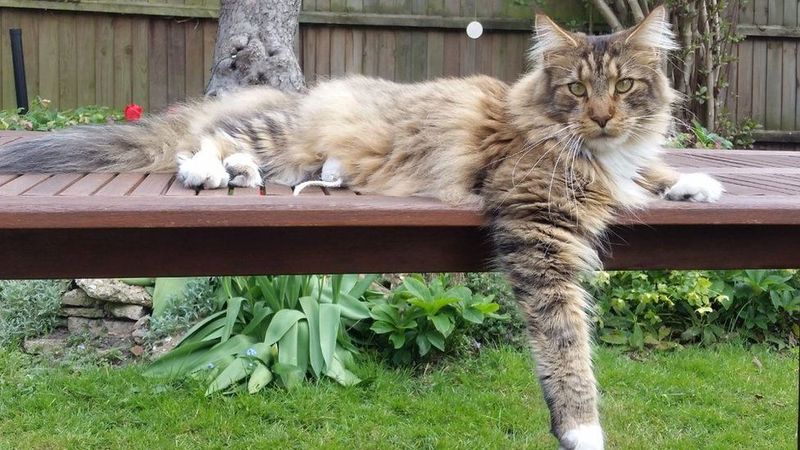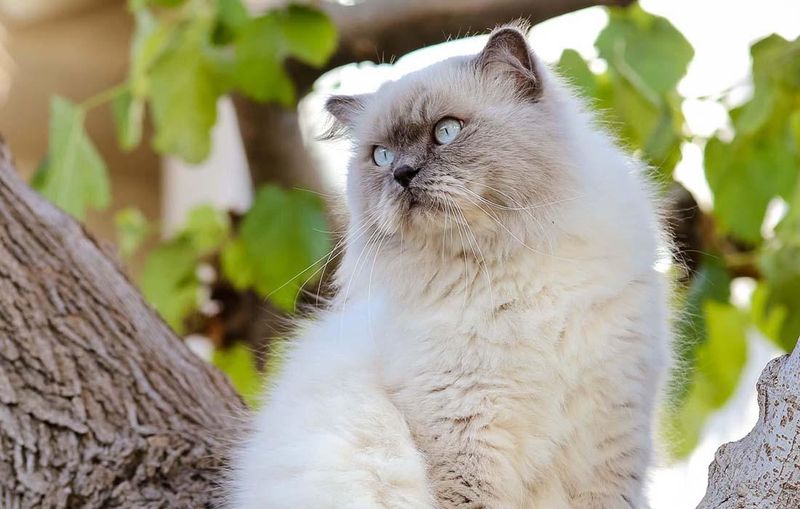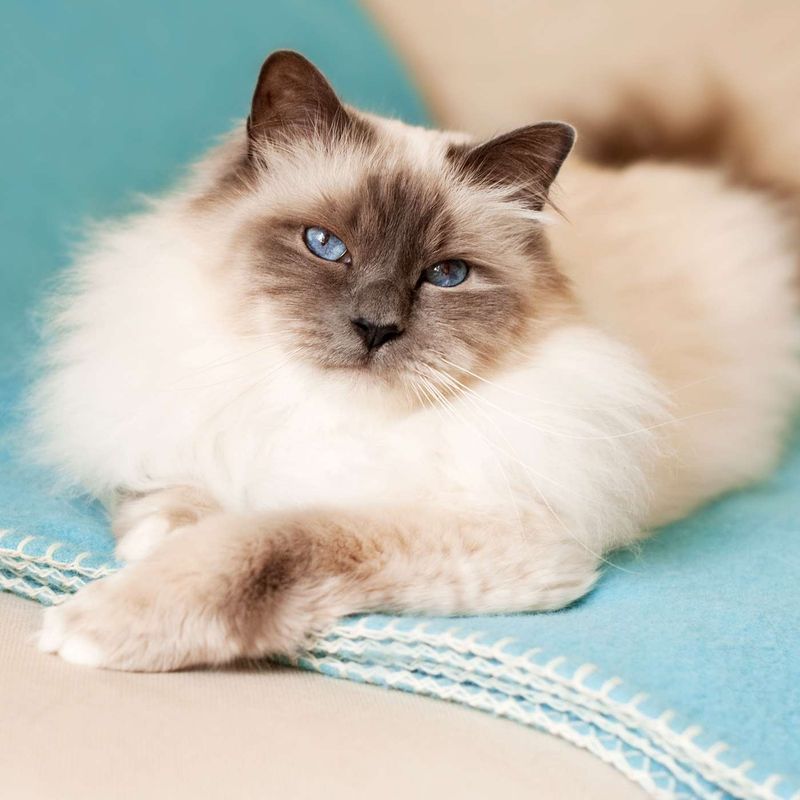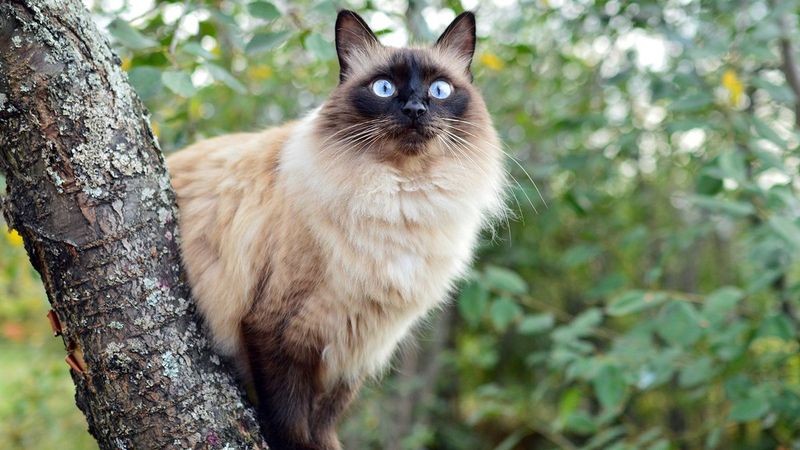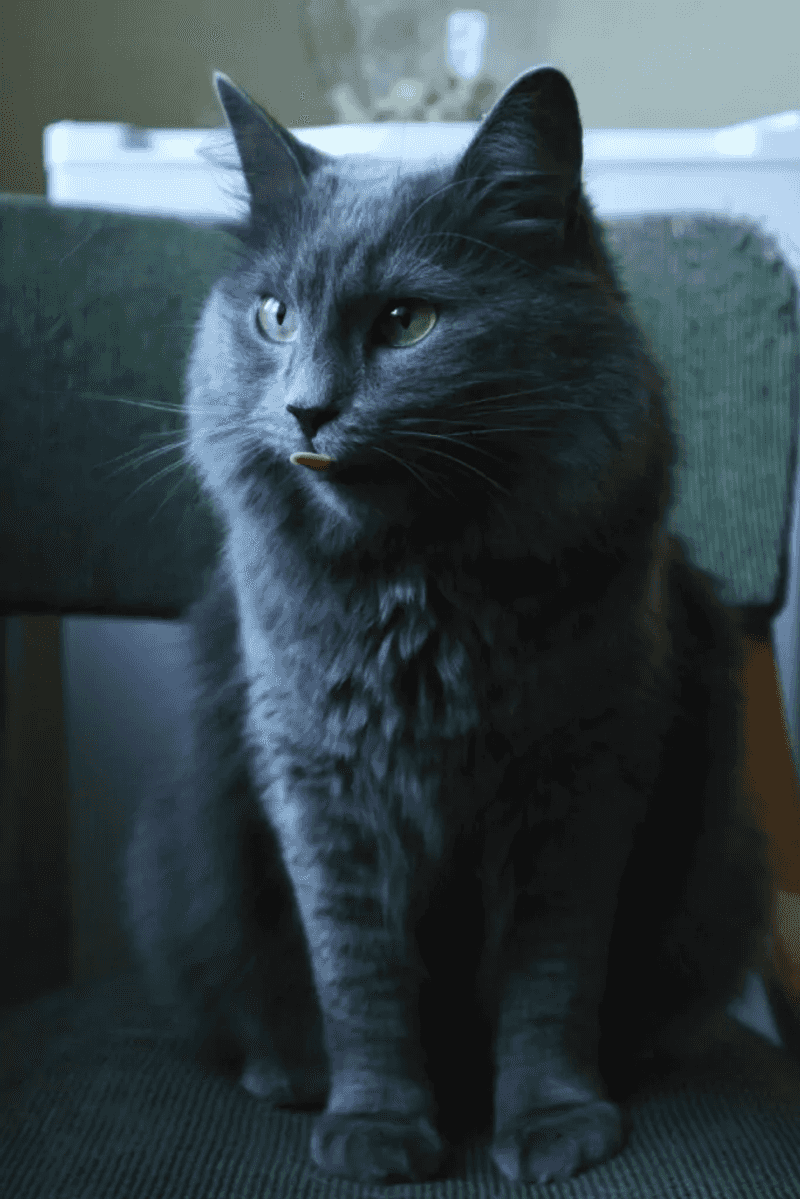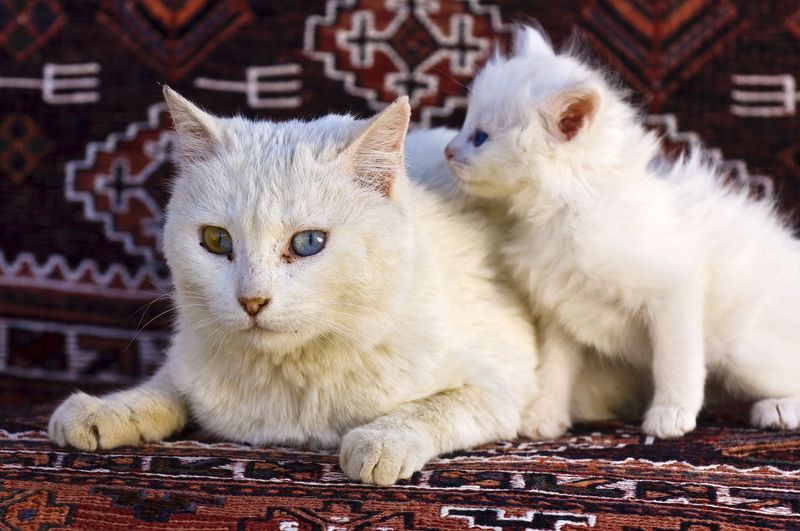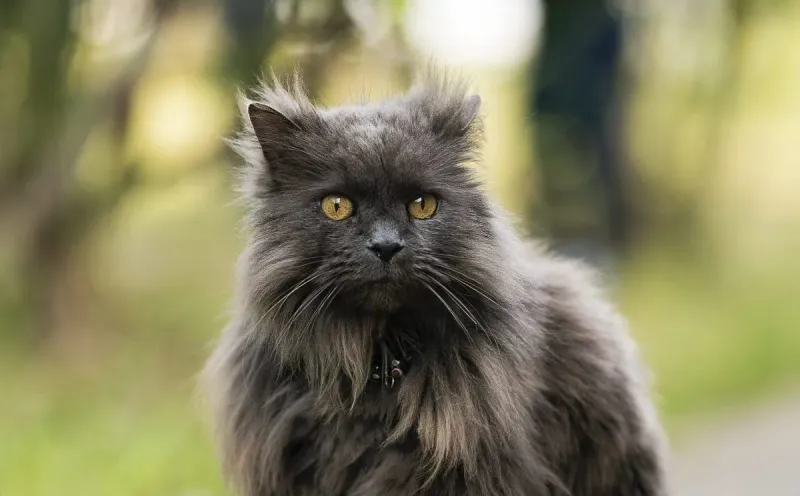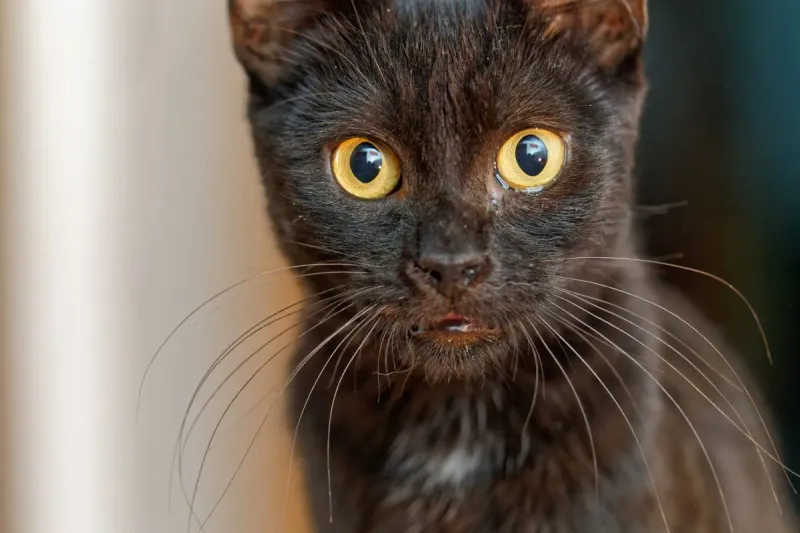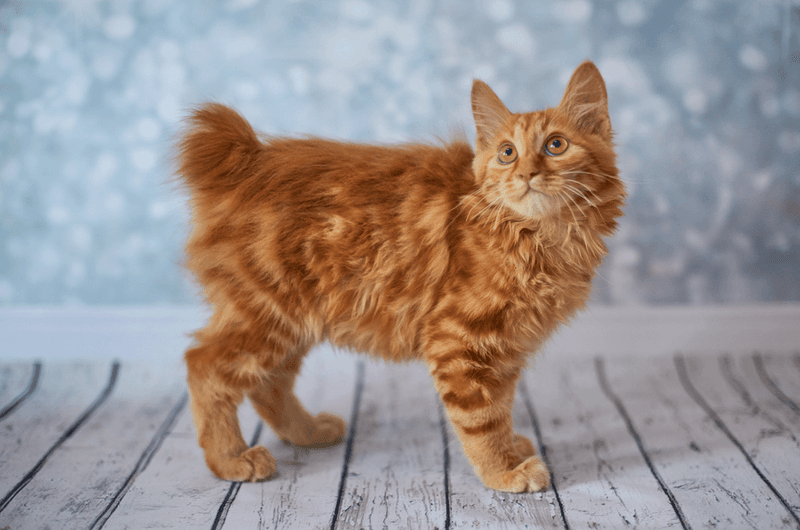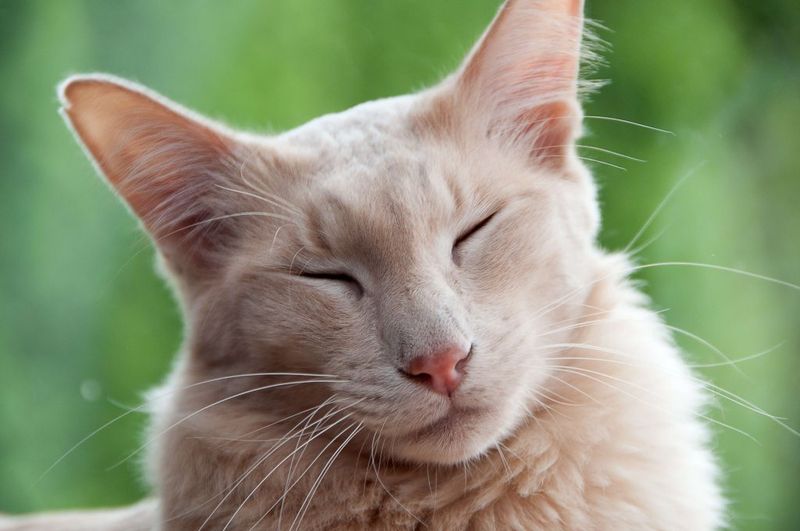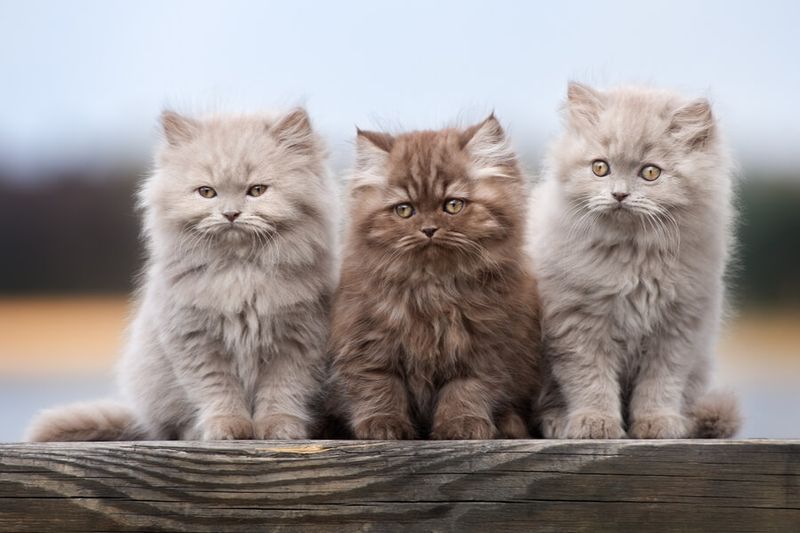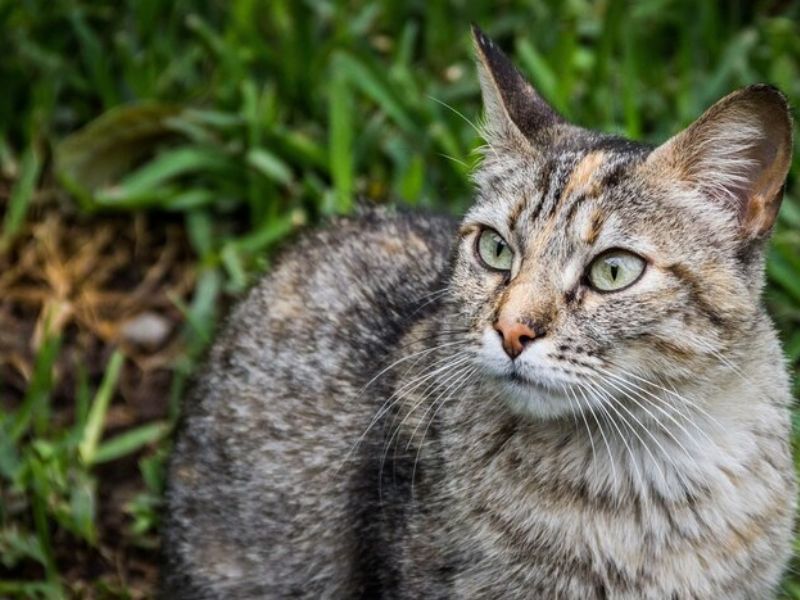📖 Table of Content:
- 1. Persian
- 2. Maine Coon
- 3. Ragdoll
- 4. Norwegian Forest Cat
- 5. Siberian
- 6. Himalayan
- 7. Birman
- 8. Turkish Angora
- 9. Somali
- 10. Balinese
- 11. Nebelung
- 12. Turkish Van
- 13. Ragamuffin
- 14. Cymric
- 15. LaPerm
- 16. Chantilly-Tiffany
- 17. York Chocolate
- 18. American Bobtail Longhair
- 19. Javanese
- 20. British Longhair
- 21. Pixiebob Longhair
There’s an undeniable charm to cats draped in long, elegant fur. Their soft, flowing coats add a regal touch that turns heads and invites admiration. These breeds exude grace, whether lounging in the sun or striding across a room.
Beyond their beauty, longhaired cats bring unique grooming needs and personalities. Their coats require regular maintenance to stay tangle-free and healthy. Many of these felines also have calm, affectionate temperaments that make them beloved companions.
From iconic breeds to rare gems, longhaired cats offer more than just good looks. Their presence brings warmth, elegance, and a bit of drama to any home. Each one carries a blend of history, character, and style that sets them apart.
1. Persian
The undisputed royalty of the longhaired cat world, Persians have been cherished companions for centuries. Their thick, luxurious coats require daily grooming to prevent mats and tangles.
These cats are known for their sweet, gentle temperaments and prefer quiet environments where they can lounge in comfort. Despite their high-maintenance fur, Persian owners insist that grooming sessions become bonding time.
Persians come in numerous colors and patterns, from solid whites to calicos and everything in between. Their distinctive flat faces and round eyes give them an eternally kitten-like appearance that many find irresistible.
2. Maine Coon
America’s gentle giants, Maine Coons boast impressive size along with their magnificent coats. These natural athletes have water-resistant fur with a thick undercoat and longer guard hairs that protect them in harsh weather.
Friendly and sociable, Maine Coons often follow their humans from room to room, chatting with distinctive chirps and trills. Their tufted ears and lynx-like appearance hint at their wild ancestry, though they’re among the most good-natured cats you’ll meet.
Maine Coons develop slowly, taking up to four years to reach full size. Their bushy tails, which they wrap around themselves for warmth, are almost as long as their bodies.
3. Ragdoll
Ragdolls earn their name from their tendency to go limp when picked up, just like a child’s cloth doll. Their semi-longhaired coats feel silky to the touch and surprisingly require less maintenance than other longhaired breeds.
Blue eyes are a trademark feature of all Ragdolls, regardless of their coat color or pattern. These cats form strong bonds with their families and often greet them at the door like dogs.
Calm and adaptable, Ragdolls make excellent companions for families with children or other pets. Their laid-back nature doesn’t mean they’re lazy – they enjoy interactive play and can learn tricks with positive reinforcement.
4. Norwegian Forest Cat
Straight from Norse mythology, Norwegian Forest Cats (or ‘Wegies’) evolved to survive Scandinavian winters. Their double-layered water-resistant coats and tufted paws served as natural snowshoes in their native forests.
Athletic and adventurous, these cats are excellent climbers who love perching in high places to survey their domain. Despite their wild appearance, they’re affectionate family cats who bond deeply with their humans while maintaining an independent streak.
Norwegian Forest Cats feature triangular heads, almond-shaped eyes, and strong chins. Their thick neck ruffs resemble lions’ manes, especially prominent in males, giving them a majestic appearance that matches their woodland warrior heritage.
5. Siberian
Russia’s national cat, the Siberian, evolved naturally in the harsh Siberian climate. Their triple-layered coats grow thicker in winter and shed significantly during seasonal changes, requiring extra grooming during these times.
Surprisingly, many people with cat allergies report fewer reactions to Siberians. This may be due to lower levels of the Fel d 1 protein in their saliva, though they’re not truly hypoallergenic.
Siberians are powerfully built, agile jumpers who retain their playful kitten-like behavior well into adulthood. Their intelligence makes them problem solvers who can figure out how to open doors and cabinets when motivated by curiosity.
6. Himalayan
With the elegance of Persian cats and the unique coloring of Siamese, Himalayans stand out with their captivating appearance. These cats inherit the flat facial structure and expressive round eyes of Persians, paired with the characteristic pointed coloration on key areas like the ears, face, paws, and tail.
Affectionately called ‘Himmies’ by enthusiasts, these cats share the Persian’s laid-back temperament. They enjoy quiet environments where they can lounge on soft surfaces and receive gentle attention from their favorite humans.
Their plush coats demand daily grooming to prevent painful mats from forming. Many owners maintain a ‘puppy cut’ trim to reduce maintenance while preserving the breed’s distinctive look.
7. Birman
According to legend, Birmans were the sacred temple cats of Burma (now Myanmar), blessed by a blue-eyed goddess. Their most distinctive feature is their four white paws, called ‘gloves,’ which contrast beautifully with their pointed coloration.
Birmans possess silky coats that rarely mat, making them somewhat lower maintenance than other longhaired breeds. They’re known for their sweet voices and tendency to ‘talk’ to their humans throughout the day.
Gentle and patient, these cats form strong bonds with their families but aren’t typically demanding of attention. Their balanced temperament makes them excellent companions for households with children, elderly people, or other pets.
8. Turkish Angora
One of the oldest natural cat breeds, Turkish Angoras originated around Ankara, Turkey. Their silky, fine coats lack the dense undercoat of many longhaired breeds, giving them an elegant, flowing appearance without excessive bulk.
Intelligent and energetic, these cats retain their playful spirit throughout their lives. They’re natural athletes who enjoy interactive games and can learn to fetch, walk on leashes, and perform tricks with enthusiastic training.
While white Turkish Angoras with odd-colored eyes (one blue, one amber) are most famous, the breed comes in many colors and patterns. Their graceful bodies, wedge-shaped heads, and large pointed ears create a distinctive silhouette that cat fanciers instantly recognize.
9. Somali
Often described as ‘foxlike,’ Somalis are the longhaired version of Abyssinians. Their ticked coats feature bands of color on each hair shaft, creating a wild appearance reminiscent of small African wildcats.
Somalis practically vibrate with energy and curiosity. These cats need plenty of toys, climbing opportunities, and interactive play to keep their active minds engaged.
Their medium-length fur is surprisingly easy to maintain with weekly brushing. Somalis sport distinctive dark ‘eyeliner’ markings, bushy tails, and large alert ears that give them an eternally surprised expression. Despite their wild looks, they form close bonds with their humans and often follow them around the house like furry shadows.
10. Balinese
Balinese cats are essentially longhaired Siamese, named for the graceful dancers of Bali whose movements they supposedly resemble. Their silky, medium-length coats flow elegantly when they move, concentrating in a plume-like tail.
Vocal and opinionated like their Siamese cousins, Balinese cats won’t hesitate to tell you exactly what they think. They form intense bonds with their humans and often become ‘velcro cats’ who want to be involved in everything you do.
Highly intelligent, these cats excel at puzzle toys and learning tricks. Their slender bodies, wedge-shaped heads, and striking blue eyes create an elegant appearance that matches their sophisticated personalities.
11. Nebelung
Named for the German term meaning “creature of the mist,” the Nebelung’s ethereal look is reflected in their shimmering blue-gray coats. Their medium-long fur, tipped with silver, gives them a mysterious, mist-like glow.
Reserved with strangers but devoted to their families, Nebelungs form strong bonds with their chosen people. They typically select one family member as their special person while remaining friendly with others in the household.
Routine-loving and somewhat sensitive to change, these cats appreciate consistent schedules and peaceful environments. Their plush double coats require regular grooming but less than many longhaired breeds, with extra attention needed during seasonal shedding periods.
12. Turkish Van
Known as the ‘swimming cats,’ Turkish Vans love water, unlike most felines. Native to the Lake Van region of Turkey, they’ve developed water-resistant semi-long coats that dry quickly after their aquatic adventures.
Their distinctive coloration pattern features a primarily white body with colored markings confined to the head and tail, known as the ‘van pattern.’ Many Turkish Vans have different-colored eyes, adding to their unique appearance.
Energetic and intelligent, these cats are late bloomers who don’t reach full maturity until around 3-5 years of age. Their cashmere-like coats lack the dense undercoat of many longhaired breeds, resulting in less matting and seasonal shedding concentrated in spring and fall.
13. Ragamuffin
Featuring plush fur reminiscent of a rabbit’s softness, Ragamuffins are affectionate giants available in countless colors and patterns. They originated from crosses with Ragdolls but showcase a broader range of traits.
These sturdy cats have substantial bodies and take up to four years to reach full size. Despite their heft, they move with surprising grace and enjoy interactive play sessions with their families.
Exceptionally patient and tolerant, Ragamuffins make ideal companions for children and elderly people. Their thick, silky coats require regular grooming but resist matting better than many longhaired breeds. Unlike some cats, most Ragamuffins actually enjoy being brushed when introduced to grooming properly.
14. Cymric
Cymrics (pronounced kim-rick) are essentially the longhaired version of Manx cats, complete with the famous tailless gene. Their dense double coats give them a rounded, puffball appearance that belies their muscular bodies and powerful hind legs.
Playful and devoted, these cats retain kitten-like qualities throughout their lives. They’re known for their strong hunting instincts and will happily keep your home free of unwanted pests.
Not all Cymrics are completely tailless – they range from ‘rumpies’ (no tail) to ‘longies’ (nearly full-length tails), with ‘stumpies’ and ‘risers’ in between. Their back legs are noticeably longer than their front legs, giving them a distinctive rabbit-like hop when they run.
15. LaPerm
Known for their distinctive curly fur, LaPerms have coats that bounce and spring to the touch. This breed began with a natural mutation on an Oregon farm in 1982, giving them their signature perm-like curls.
The longhaired variety sports ringlets that create a shaggy, tousled look unlike any other cat breed. Their curls are most prominent around the neck, base of ears, and tail, creating natural ruffs and plumes.
Affectionate and people-oriented, LaPerms seek human interaction and make excellent lap cats. They’re moderate shedders despite their abundant coats, and some people with mild cat allergies report fewer reactions to them. Their curly whiskers often match their coats, adding to their distinctive appearance.
16. Chantilly-Tiffany
The Chantilly-Tiffany (sometimes just called Chantilly) is known for its silky, semi-long chocolate-colored coat, though they now come in other colors too. Their fur lacks the thick undercoat of many longhaired breeds, resulting in less matting and easier maintenance.
Remarkably quiet cats, Chantillies prefer soft chirps and trills to meows when communicating with their humans. They’re moderately active and enjoy interactive play but aren’t as demanding as some more energetic breeds.
These cats form strong bonds with their families and don’t do well when left alone for extended periods. Their golden eyes, set against their dark coats, give them a warm, expressive look that cat lovers find irresistible.
17. York Chocolate
As their name suggests, York Chocolates display rich brown coats that range from milk chocolate to deep cocoa. This rare breed originated in New York state in 1983 and remains uncommon outside North America.
Their semi-longhaired coats feel silky and develop slowly, with full length and color not appearing until maturity. Males often develop impressive ruffs around their necks, while females typically have more delicate features.
York Chocolates bond strongly with their families and show remarkable loyalty. They’re intelligent problem-solvers who enjoy learning tricks and navigating puzzle toys. Despite their elegant appearance, they’re playful cats who maintain their kitten-like enthusiasm well into adulthood.
18. American Bobtail Longhair
The hallmark of American Bobtails is their short tails that vary from straight to slightly bent or kinked. Their longhaired versions boast a shaggy, messy coat that enhances their wild, bobcat resemblance.
Athletic and sturdy, these cats are excellent jumpers and climbers who need plenty of vertical space to explore. Their shortened tails don’t affect their balance or agility in the slightest.
Remarkably adaptable, American Bobtails adjust well to new environments and travel better than many cats. Their friendly, outgoing nature makes them excellent therapy cats who readily accept handling from strangers. Their thick double coats require regular brushing to prevent matting, especially during seasonal shedding periods.
19. Javanese
Javanese cats combine Balinese elegance with colorpoint patterns not seen in traditional Siamese. These slender, athletic cats sport medium-length silky coats that lie close to their bodies with minimal undercoat.
Extremely intelligent and vocal, Javanese cats will hold lengthy ‘conversations’ with their humans. They’re problem solvers who can learn to open doors, cabinets, and even simple locks when motivated.
Active and playful throughout their lives, these cats need plenty of mental and physical stimulation. Their coats require minimal maintenance compared to many longhaired breeds, with weekly brushing usually sufficient to keep them looking their best. Despite their refined appearance, they’re surprisingly sturdy and athletic cats.
20. British Longhair
British Longhairs combine the sturdy build of British Shorthairs with luxurious medium-length coats. Their plush fur stands away from their bodies, creating a rounded, teddy bear appearance that many find irresistible.
Less active than many cats, British Longhairs prefer lounging in comfortable spots to racing around the house. They’re independent without being aloof and enjoy company without demanding constant attention.
Their dense double coats require regular grooming to prevent mats and remove loose hair, especially during seasonal shedding. British Longhairs come in numerous colors and patterns, with the blue (gray) variety being particularly popular. Their round faces with chubby cheeks and large round eyes give them a perpetually pleased expression.
21. Pixiebob Longhair
Sporting short tails, spotted fur, and lynx-like ear tips, Pixiebobs have a striking resemblance to miniature bobcats. Longhaired individuals appear even wilder, thanks to their tousled, shaggy coats—yet they are 100% domestic.
Despite their fierce appearance, Pixiebobs are gentle giants with dog-like personalities. Many learn to walk on leashes, play fetch, and come when called by name.
Their thick double coats need regular grooming to prevent mats and tangles. Pixiebobs are one of the few breeds that commonly have polydactyl paws (extra toes), which adds to their distinctive appearance. These social cats form strong bonds with their families and often get along well with children and other pets.
